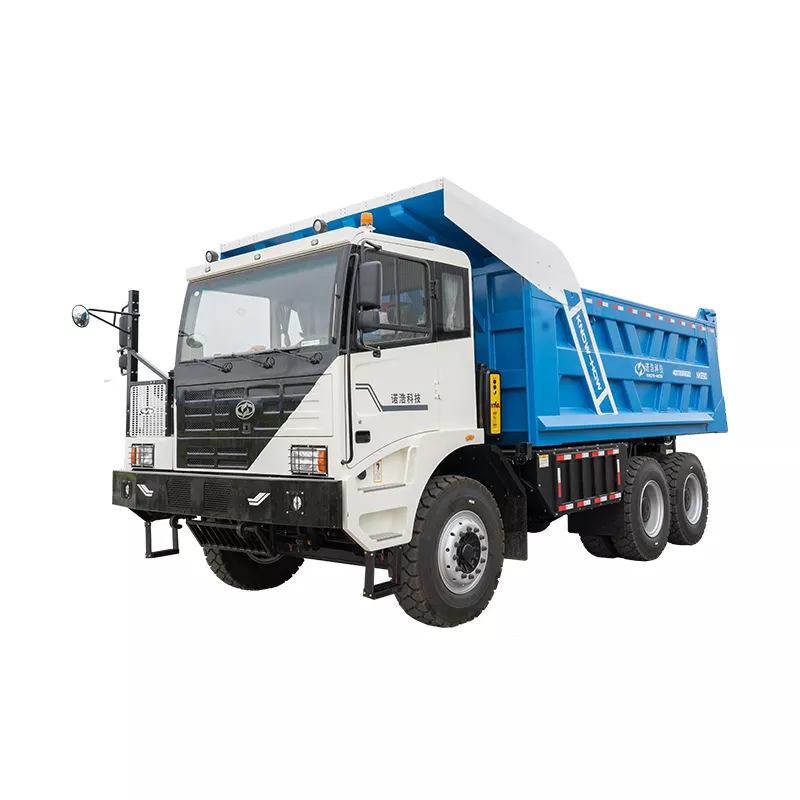In recent years, the automotive industry has witnessed a significant shift towards sustainability and environmental consciousness. This transformation has not only impacted passenger vehicles but has also spurred innovations in the realm of heavy-duty vehicles, particularly dump trucks. The emergence of electric dump trucks represents a groundbreaking advancement in the construction and mining sectors, offering a cleaner, more efficient, and cost-effective alternative to traditional diesel-powered counterparts. In this article, we delve into the world of heavy-duty electric vehicles, exploring their rise, the technologies driving them, and their potential to revolutionize the industry.

Electric dump trucks, once a niche concept, are now gaining prominence in the construction and mining industries. This paradigm shift is fueled by the growing awareness of the environmental impact of fossil fuels, stricter emission regulations, and the need for cost-effective, sustainable solutions.
One of the primary drivers behind the rise of electric dump trucks is their significantly lower environmental impact compared to diesel-powered counterparts. Electric vehicles produce zero tailpipe emissions, reducing air pollution and minimizing their carbon footprint. This eco-friendly approach aligns with global efforts to combat climate change and reduce greenhouse gas emissions.
Electric dump trucks offer cost-efficiency benefits that are hard to ignore. While the initial purchase price of electric vehicles may be higher than diesel trucks, their lower operational and maintenance costs make them a viable long-term investment. Electric motors have fewer moving parts, resulting in reduced maintenance requirements and longer vehicle lifespan. Additionally, electricity is generally more affordable than diesel fuel, translating into lower operating expenses.
The success of electric dump trucks can be attributed to the innovative technologies underpinning their design and operation. These cutting-edge advancements are key to their superior performance and efficiency.
The heart of any electric vehicle is its battery system. Electric dump trucks are equipped with high-capacity lithium-ion batteries that store and deliver power efficiently. These batteries have come a long way in terms of energy density and charging capabilities, allowing electric dump trucks to cover longer distances and operate for extended periods on a single charge.
Regenerative braking technology is another crucial aspect of electric dump trucks. This innovative feature captures and converts energy typically lost as heat during braking into electricity, which is then stored in the vehicle's batteries. This regenerative process enhances overall energy efficiency, making electric dump trucks highly economical.
Electric dump trucks are powered by advanced electric motor systems that deliver impressive torque and acceleration. These motors provide instant torque, ensuring smooth and efficient operation, even in challenging terrain. Moreover, electric motors are quieter than diesel engines, reducing noise pollution at worksites.
The rise of electric dump trucks represents a transformative moment in the heavy-duty vehicle industry. These environmentally friendly, cost-effective, and technologically advanced vehicles are poised to reshape the construction and mining sectors. With ongoing advancements in battery technology, charging infrastructure, and autonomous capabilities, the future of heavy-duty electric vehicles looks brighter than ever.
In a world that increasingly values sustainability and efficiency, electric dump trucks have emerged as a beacon of progress, offering a glimpse into a cleaner, more sustainable future for heavy-duty transportation. As the demand for these innovative vehicles grows, their presence on construction sites and mining operations worldwide is set to become more ubiquitous, driving positive change and revolutionizing the industry.
Copyright:@2020-2021
Comments Please sign in or sign up to post.
0
0 of 500 characters used